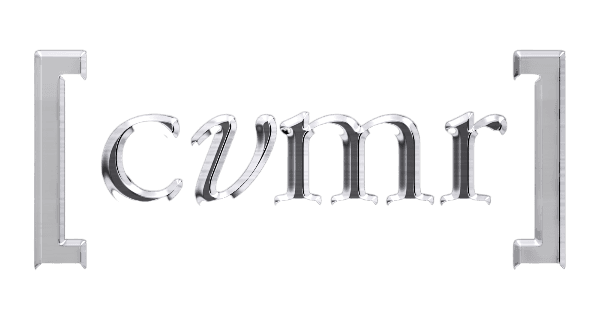New Magnesium Rechargeable Batteries
NBC2 NEWS Sunday, January 20th 2019, 9:17 PM EST
New Magnesium Rechargeable Batteries
CVMR® Energy Metals Inc. a wholly owned subsidiary of CVMR® Inc. (CVMR®) announced that it has made a major breakthrough in using magnesium as a more efficient and safer alternative to lithium in rechargeable batteries that…
Sunday, January 20th 2019, 9:17 PM EST
CVMR® Energy Metals Inc., a wholly owned subsidiary of CVMR® Inc. (CVMR®), announced that it has made a major breakthrough in using magnesium as a more efficient and safer alternative to lithium in rechargeable batteries that are used in electric cars and electronic devices.
Los Angeles, CA, January 20, 2019 –(PR.com)– Various institutions have researched magnesium as a replacement for lithium in rechargeable batteries since the late 1990s. CVMR® Energy Metals Inc., a wholly owned subsidiary of CVMR® Inc. (CVMR®), has been carrying out its own independent research on rechargeable magnesium batteries in the past 8 years. Today, the company announced that it has made a major breakthrough in the use of magnesium as an anode in rechargeable batteries.
Kamran M. Khozan, Chairman and CEO of CVMR® in a recent press conference stated: “Rechargeable batteries based on magnesium, rather than lithium, have the potential to extend electric vehicles range by packing more energy into smaller batteries. Magnesium metal has a higher energy density than lithium, meaning you can potentially store more energy in a battery of the same size.”
Since their commercialization in the 1990s, rechargeable Li-ion batteries have dominated the market of the rechargeable battery industry. They are the main energy source in portable electronic devices and electric cars. But there are serious concerns among the manufacturers of these batteries and their end users about the availability and cost of lithium. Magnesium is an interesting alternative.
Magnesium is not only cheaper and more abundant than lithium, the advantages it presents are in its energy density. It has a volumetric energy density that is 50% higher than lithium and unlike lithium it does not require an “intercalation” compound layer, allowing its relative volumetric energy density in a battery to be 5 times higher than lithium ion batteries.
CVMR®’s breakthrough is in the use of a higher energy density cathode material and an electrolyte that can facilitate the chemical reactions to generate higher energy density than lithium batteries. CVMR® expects to be able to commercialize the new batteries well within the next 2 years. It has four patents pending for this new invention.
“We expect the main markets for magnesium rechargeable batteries to be in North America, EU, China and India and wherever electric cars are being produced,” declared Khozan.
Non-rechargeable magnesium batteries have been commercially available for decades. The magnesium dry batteries were widely used by the US military from 1965 to 1984. Magnesium air batteries have been used as land based backup systems as well as undersea power sources, using seawater as the electrolyte. Although magnesium air batteries are primary cells (i.e. are not rechargeable) they have the potential to become rechargeable by replacing their anode and electrolyte.
The potential for rechargeable magnesium batteries has been well known and documented, but the technical challenges with cost effective high-energy density cathode material and suitable electrolytes slowed down the progress in this field. The major problem has been the formation of a non-conductive layer on the magnesium anode blocking the recharging of the battery. In late 2016 Honda’s Saitama Industrial Technology Center claimed that they had overcome these well-known problems and have produced a commercially viable magnesium rechargeable battery using vanadium as a cathode. These batteries have not been commercialized yet.
Although CVMR® owns one of the largest vanadium reserves in Africa, and vanadium has been touted as a suitable cathode in magnesium batteries, nevertheless CVMR® decided to test a host of other elements and their compounds, such as zirconium, cobalt and tungsten in search of the most suitable cathode in magnesium batteries. Vanadium, manganese and transition metals in general proved to be the most promising according to CVMR® scientists.
The discoveries of chemical reactions involving magnesium at the U.S. Department of Energy’s Joint Center for Energy Storage Research, led by scientists at Lawrence Berkeley National Laboratory (Berkeley Lab) and Toyota Research Institute of North America at Ann Arbor, have led to a deeper understanding of the chemical breakdown that occurs within tens of nanometers of an electrode surface that causes to degrade battery performance. The scientists at Berkeley Lab discovered that the self-stabilizing, thin oxide surface layer that forms on the magnesium has some inherent defects that cause unwanted reactions. This discovery helped CVMR® focus their research to overcome such defects.
Kamran Khozan ended his press conference by stating: “Today’s scientific discoveries cannot take place in isolation. We all benefit from each other’s efforts, and owe a debt of gratitude to those who have the vision to be leaders in their field of specialization. We owe a great deal to the scientists who have been looking for alternatives to Lithium based rechargeable batteries in the past 30 years.” (www.cvmr.ca)
Contact Information:
CVMR® Inc.
Kamran M. Khozan
416-743-2746
Contact via Email
cvmr.ca
Read more from original source: https://www.nbc-2.com/story/39822398/new-magnesium-rechargeable-batteries
Read also





